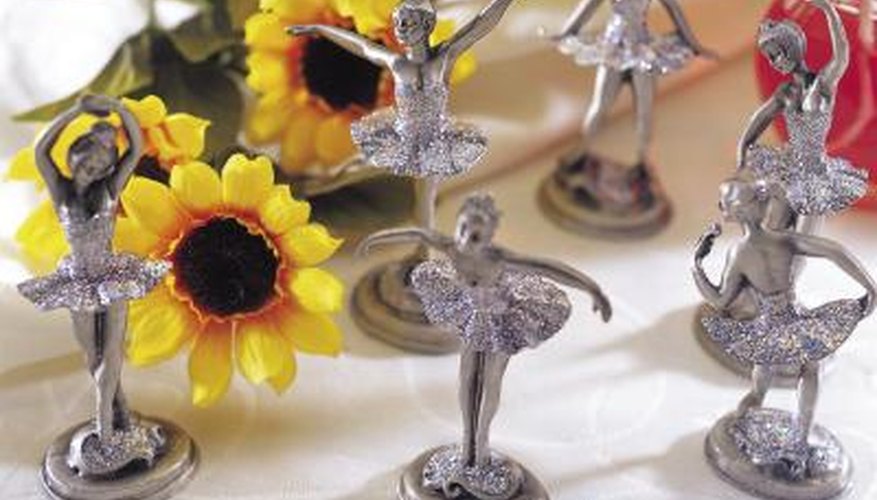Pewter is a soft, low-melting alloy that, in the past, contained lead. According to the Worshipful Company of Pewterers, modern pewter is lead-free and contains between 91 and 95 per cent tin. While old and antique pewter items are notoriously difficult to repair, modern pieces can be repaired using pewter solder.
- Pewter is a soft, low-melting alloy that, in the past, contained lead.
- While old and antique pewter items are notoriously difficult to repair, modern pieces can be repaired using pewter solder.
Clean the surfaces that need repairing and work out how they fit together. Make a diagram if necessary. Ensure all moisture is removed from exposed surfaces.
Turn the soldering iron on. It is ready to use when the solder melts on contact with the iron.
Hold the iron ½ -inch from the surface of the largest piece of pewter that needs repairing. Lightly bring the solder into contact with the soldering iron and allow the molten metal to drip onto the pewter.
Press quickly the smaller piece of pewter into this area and hold it in position until the molten solder has hardened. This takes up to a minute.
- Hold the iron ½ -inch from the surface of the largest piece of pewter that needs repairing.
- Press quickly the smaller piece of pewter into this area and hold it in position until the molten solder has hardened.
Fill any gaps in the newly made join. Hold the end of the solder against the gap and heat it with the iron. As it melts, move the wire across the gap, allowing the molten solder to fill it.
Sand away excess solder using fine-grade sandpaper. When satisfied with the repair, use a mild steel wool followed by a soft cotton cloth to remove scratches caused by the sandpaper.
